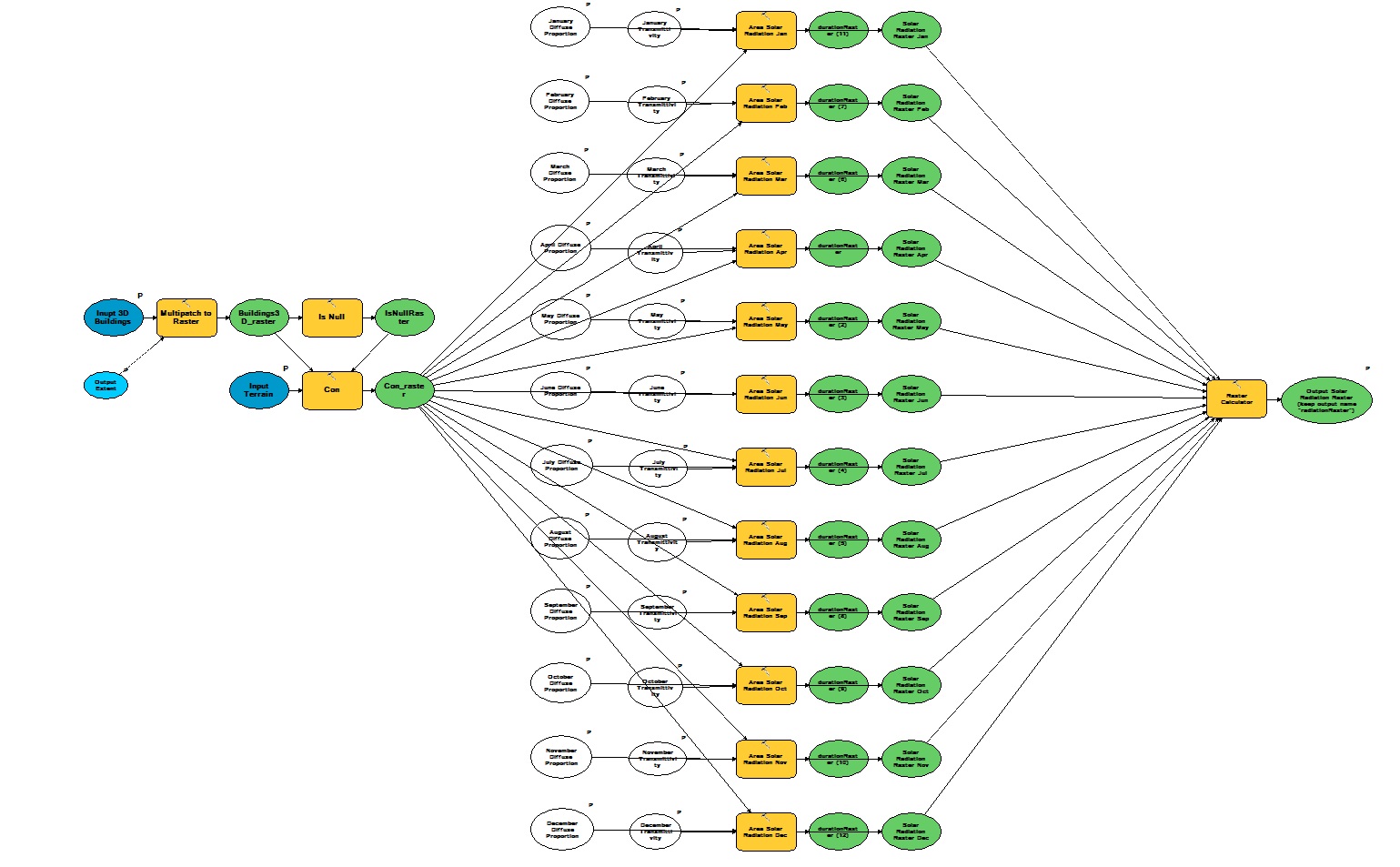- Home
- :
- All Communities
- :
- Products
- :
- Geoprocessing
- :
- Geoprocessing Questions
- :
- Re: Solar Radiation Burn Buildings- raster calcula...
- Subscribe to RSS Feed
- Mark Topic as New
- Mark Topic as Read
- Float this Topic for Current User
- Bookmark
- Subscribe
- Mute
- Printer Friendly Page
Solar Radiation Burn Buildings- raster calculator opperation
- Mark as New
- Bookmark
- Subscribe
- Mute
- Subscribe to RSS Feed
- Permalink
hello, i have recently gone throw the city engine solar analysis tutorial as a steeping stone for my dissertation and i don't understand something about the SolarRadiationBurnBuildings model ... at the very end it all of the 12 raster's (one for each month) from the solar analysis tool are added up in raster calculator then they are divided by 365000 ... Way that number, what douse it represent, and how did they deduced it?
- Mark as New
- Bookmark
- Subscribe
- Mute
- Subscribe to RSS Feed
- Permalink
365 sounds like days what is the size of the rasters in terms of rows and columns or some other measure like meters, perhaps, it is just standardizing the value(s) on an annual basis. Any details on the inputs from the tutorial tdo save people finding it, loading it etc would be useful.
- Mark as New
- Bookmark
- Subscribe
- Mute
- Subscribe to RSS Feed
- Permalink
the raster has
<Columns_and_Rows>6703, 5785</Columns_and_Rows> and the <Cell_Size__X._Y_>3, 3 meters< , the model used is this

ant the diffusion and transmission parameters are calculated separately (witch i did for my area).
And this is the link to the tutorial that i used Calculate solar radiation—3D Cities | ArcGIS for Desktop
As for the number 365000 my initial hypothesize was that it was the number of days times 1000 wh/ day /m2 witch would come to 365000 but that's a very big standardization seeing how the difference in irradiance varies by a significant margin especially in temperate areas my second idea was to take the average irradiance for each month multiply it by the number of days for each month and then use that number to divide the resulting raster from the area solar radiation tool (but i want to get some more inputs on these issue because it takes 5hours to processes a raster for my area)
P.S
My apologies for not adding more details in the first place
- Mark as New
- Bookmark
- Subscribe
- Mute
- Subscribe to RSS Feed
- Permalink
I suspect that taking the monthly average would be more representative then working with those averages rather than make an assumption about one value for the year. I also suspect that processing the model in batche of a month or a season may be faster and take less total time than trying to process for a whole year at a time.